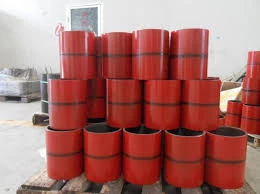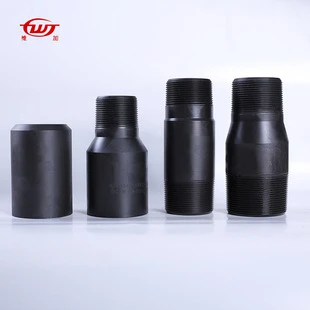1 月 . 29, 2025 02:01
Back to list
what are the differences between casing and tubing?
In the oil and gas industry, understanding the components that facilitate the extraction process is not just beneficial but crucial for efficiency and safety. Casings and tubings, often mentioned together, serve distinct purposes and are integral to well integrity. Though they might appear similar to the untrained eye, their differences are significant in terms of function, installation, and material composition. This article dives into these differences, offering valuable insights based on field experience and industry expertise.
The diameter difference is another clear distinction; casings are significantly larger than tubings as they enclose the latter. The choice of diameter for each depends on several factors, including the well design, anticipated production rates, and specific challenges related to the geological formation. In terms of pressure and temperature exposure, tubing tends to encounter more variations due to the dynamic nature of oil and gas flow, which can cause fatigue over time. This is why the materials used for tubing are often subjected to extensive testing to ensure longevity and performance under varied operational conditions. Field experience shows that installing casing requires rigorous well planning and precision, as incorrect installation can lead to severe issues such as blowouts or borehole instability. Expertise in this area emphasizes the importance of selecting the right casing depth and cementing technique to adapt to different formation conditions. Tubing, by contrast, requires meticulous engineering to optimize the flow rate and prevent problems such as leakage or blockage. Engineering solutions might involve the selection of specific thread connections that minimize the risk of leakage, and corrosion rate analyses to determine the appropriate material coatings. In summary, while both casing and tubing are essential components in the drilling and production phases, their roles, materials, and installation processes are fundamentally different. The casing serves as a structural retainer and barrier for the wellbore, whereas tubing is the conduit that efficiently transports the produced fluids to the surface. Recognizing these differences enhances operational efficiency, safety, and the longevity of the well itself. Understanding the nuances between these two components is paramount, not only from a technical perspective but also in ensuring compliance with industry standards and regulations. Such knowledge ultimately contributes to more successful drilling operations and sustainable management of oil and gas resources.


The diameter difference is another clear distinction; casings are significantly larger than tubings as they enclose the latter. The choice of diameter for each depends on several factors, including the well design, anticipated production rates, and specific challenges related to the geological formation. In terms of pressure and temperature exposure, tubing tends to encounter more variations due to the dynamic nature of oil and gas flow, which can cause fatigue over time. This is why the materials used for tubing are often subjected to extensive testing to ensure longevity and performance under varied operational conditions. Field experience shows that installing casing requires rigorous well planning and precision, as incorrect installation can lead to severe issues such as blowouts or borehole instability. Expertise in this area emphasizes the importance of selecting the right casing depth and cementing technique to adapt to different formation conditions. Tubing, by contrast, requires meticulous engineering to optimize the flow rate and prevent problems such as leakage or blockage. Engineering solutions might involve the selection of specific thread connections that minimize the risk of leakage, and corrosion rate analyses to determine the appropriate material coatings. In summary, while both casing and tubing are essential components in the drilling and production phases, their roles, materials, and installation processes are fundamentally different. The casing serves as a structural retainer and barrier for the wellbore, whereas tubing is the conduit that efficiently transports the produced fluids to the surface. Recognizing these differences enhances operational efficiency, safety, and the longevity of the well itself. Understanding the nuances between these two components is paramount, not only from a technical perspective but also in ensuring compliance with industry standards and regulations. Such knowledge ultimately contributes to more successful drilling operations and sustainable management of oil and gas resources.
Latest news
-
Unlock the Benefits of Pup Joints for Your OperationsNewsOct.31,2024
-
The Quality of Casing Couplings from ChinaNewsOct.31,2024
-
The Essential Role of Pup Joints in Drilling OperationsNewsOct.31,2024
-
The Benefits of Tubing Couplings for Your ProjectsNewsOct.31,2024
-
Enhance Your Drilling Operations with Tubing Pup JointsNewsOct.31,2024
-
Elevate Your Drilling Operations with Tubing CrossoversNewsOct.31,2024
Related Products







